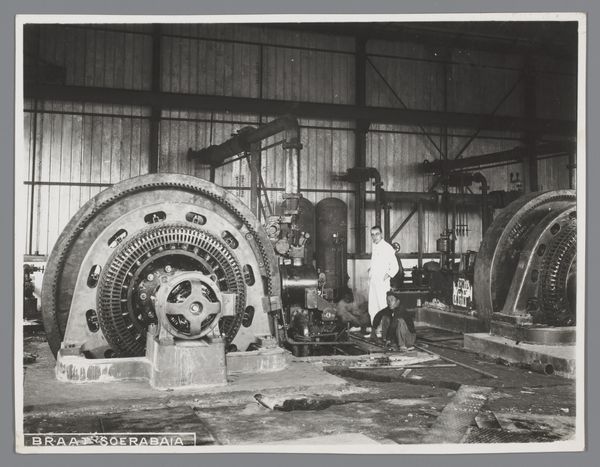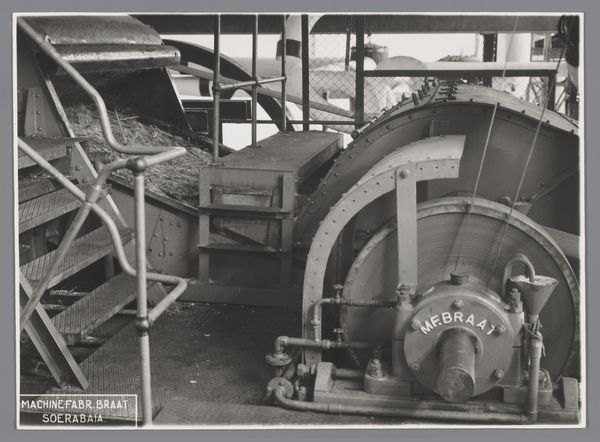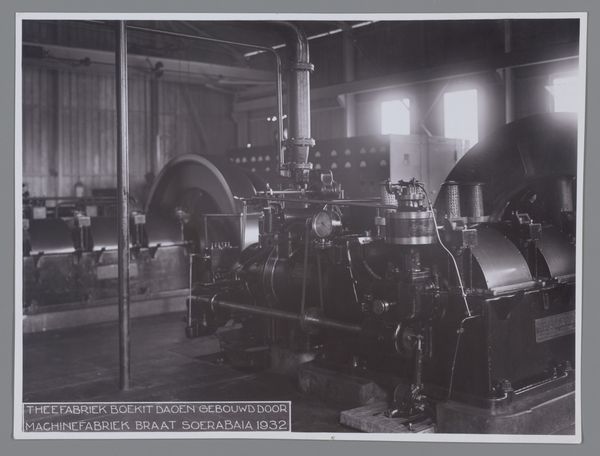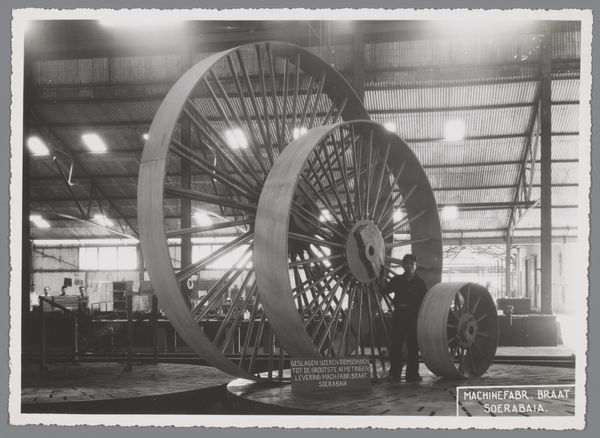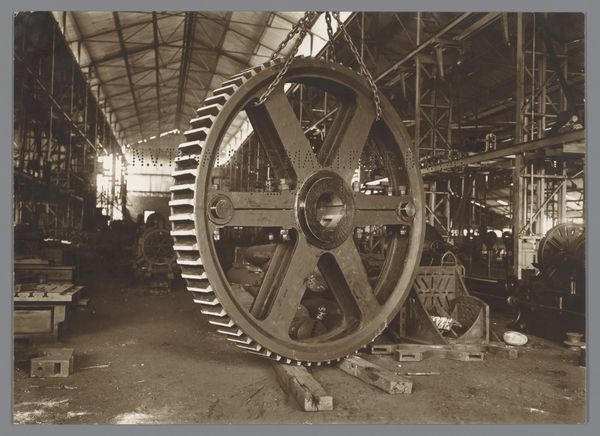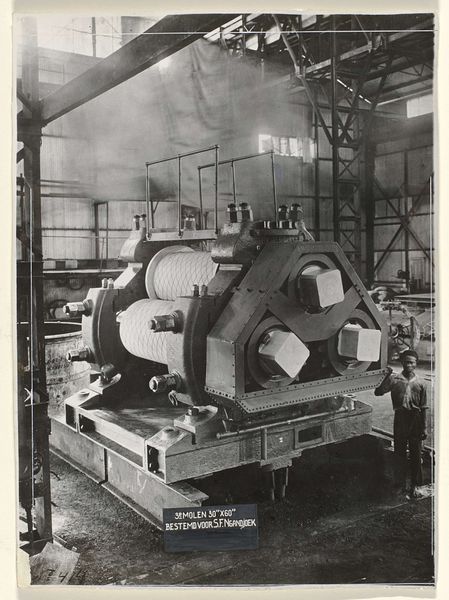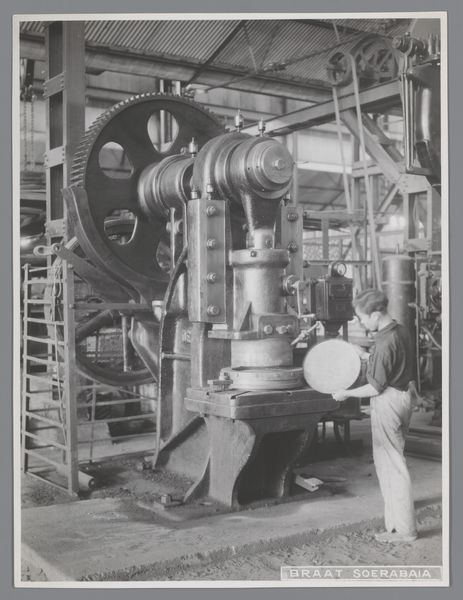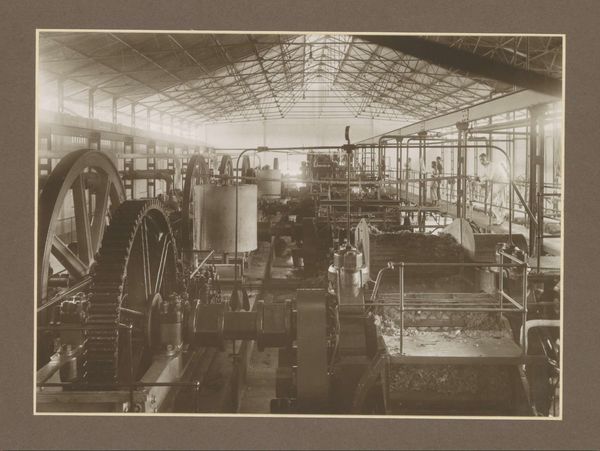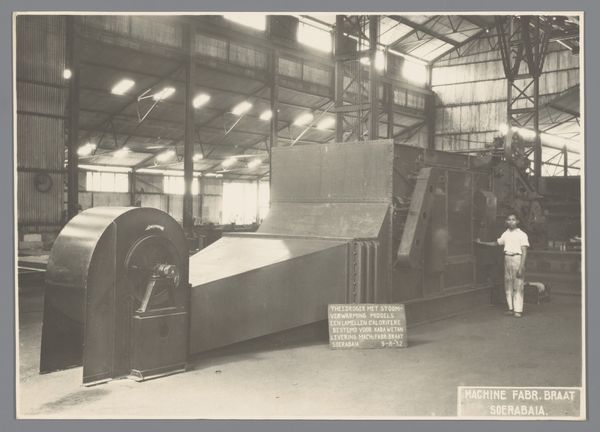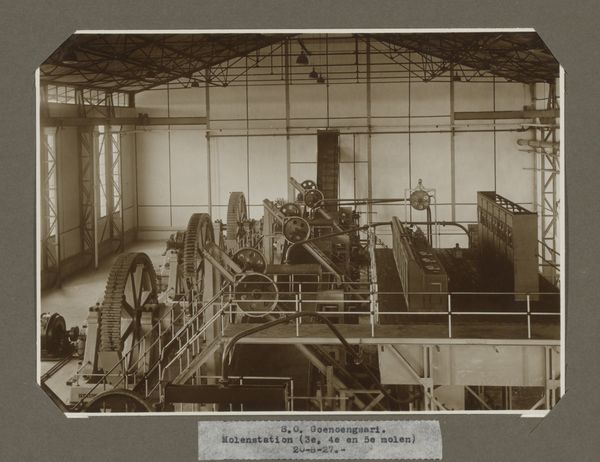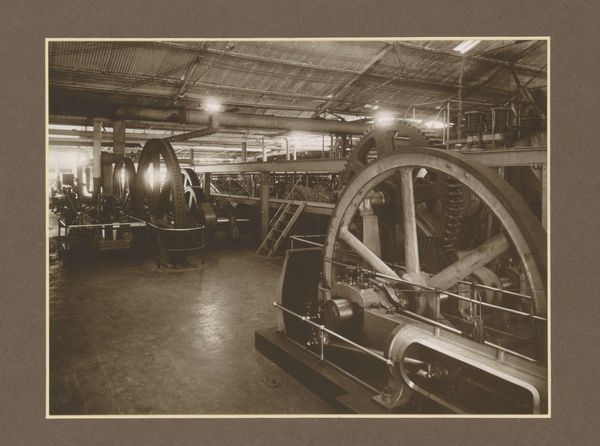
photography
#
still-life-photography
#
sculpture
#
photography
#
geometric
#
modernism
Dimensions: height 157 mm, width 206 mm
Copyright: Rijks Museum: Open Domain
Editor: Here we have a photograph titled "Gasmachines" from 1932. It’s currently at the Rijksmuseum. The anonymous artist has captured these large industrial machines. The textures of the metal and the sheer scale of the machines really strike me. How do you interpret this work in its historical context? Curator: This image is powerful precisely because it reflects a key moment in industrial and colonial history. The inscription tells us these machines were built for a tea factory by a machine factory in Soerabaia - now Surabaya - in 1932, which highlights the Dutch colonial presence in what is now Indonesia. Editor: That's fascinating. So it's not just about the machines themselves but about their presence in a specific place and time? Curator: Precisely. The very existence of this factory and these machines signifies the exploitation of resources and labor in a colonial context. What does this say about how progress or modernization impacted different regions? This photograph, with its stark presentation of industrial power, implicitly asks who benefited from such advancements, and at what cost. Editor: So, by focusing on the ‘who, what, when, where, and why’ of the piece, we can begin to consider art's historical meaning as a result of the culture that produced it. The presence of colonialism changes the piece. Curator: Exactly. Instead of merely being a photograph of machines, it becomes a visual document of global power dynamics. Considering the historical context enriches our understanding of not just the artwork itself, but also the societal structures it reflects. Editor: I’ve certainly learned to consider photography, especially within institutions such as the Rijksmuseum, as historical documentation in its own right, beyond the simple aesthetics. Thank you. Curator: Indeed. Seeing art as a product and reflection of cultural and political forces gives us a richer, more nuanced understanding of its meaning and impact.
Comments
No comments
Be the first to comment and join the conversation on the ultimate creative platform.
